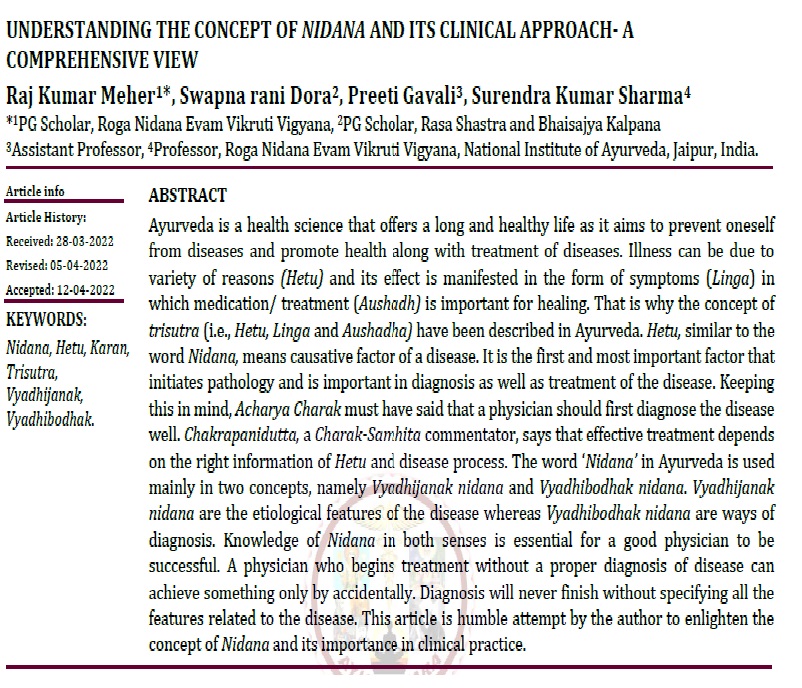Understanding the Concept of Nidana and its Clinical Approach- A Comprehensive View
DOI:
https://doi.org/10.47070/ayushdhara.v9i2.875Keywords:
Nidana, Hetu, Karan, Trisutra, Vyadhijanak, VyadhibodhakAbstract
Ayurveda is a health science that offers a long and healthy life as it aims to prevent oneself from diseases and promote health along with treatment of diseases. Illness can be due to variety of reasons (Hetu) and its effect is manifested in the form of symptoms (Linga) in which medication/ treatment (Aushadh) is important for healing. That is why the concept of trisutra (i.e., Hetu, Linga and Aushadha) have been described in Ayurveda. Hetu, similar to the word Nidana, means causative factor of a disease. It is the first and most important factor that initiates pathology and is important in diagnosis as well as treatment of the disease. Keeping this in mind, Acharya Charak must have said that a physician should first diagnose the disease well. Chakrapanidutta, a Charak-Samhita commentator, says that effective treatment depends on the right information of Hetu and disease process. The word ‘Nidana’ in Ayurveda is used mainly in two concepts, namely Vyadhijanak nidana and Vyadhibodhak nidana. Vyadhijanak nidana are the etiological features of the disease whereas Vyadhibodhak nidana are ways of diagnosis. Knowledge of Nidana in both senses is essential for a good physician to be successful. A physician who begins treatment without a proper diagnosis of disease can achieve something only by accidentally. Diagnosis will never finish without specifying all the features related to the disease. This article is humble attempt by the author to enlighten the concept of Nidana and its importance in clinical practice
Downloads

Downloads
Published
Issue
Section
License
Copyright (c) 2022 AYUSHDHARA

This work is licensed under a Creative Commons Attribution-NonCommercial-ShareAlike 4.0 International License.


